(Image: Written Within* by Elizabeth Banfield hand burnished linocut, kozo tissue, thread ©2017)
My sacral stim and I have known each other for a full 17 months now, so I felt it was the right time to make some comments and reflect, again, on this self management business.
Yes, the sacral stim is making a huge difference.
Now remember – I’m talking about my pelvis, my pain experience, my brain, my nervous system and my genes
Three (of my never-ending) realisations for living with chronic pain are that I have to:
- accept that my life and I have changed – forever
- commit to a new way of living, and
- make the sacrifices that it takes to self manage
Chronic pain really blurs life so it takes time to realise the impact (positive or negative) of any treatment or change of activity.
Time seems shorter for me. When I compare myself with full capacity humans, I feel I achieve less and the physical cost is greater.
Not the best value! But it’s what I can get.
The Sacral Stim
The good news is:
- My pain levels are very manageable.
- I can sit longer.
- I can sit back in a chair longer without the leaning on tables (and elbow and jaw clicking / breaking!).
- The muscle restlessness has reduced.
- I can fall asleep easier.
- My weight limit has increased by, maybe .5 kgs which means I can:
- manage a handbag most days.
- carry/move a few of my own things around.
- put out a small bag of rubbish / or some recycling.
- empty the dishwasher.
- make the bed some mornings.
- wear a heavy coat or my heavy boots without going ‘bang’.
- I have managed to read three books (if you consider The Lightening Process leisure reading but it’s quite a read for anyone with chronic pain).
- I’m lying on my back 15 mins to read each night before bed.
- I’m sustaining my self-made employment which is equally enjoyable and difficult.
- I manage telephone conversations a teeny bit better.
The unchanged news is:
- Sleep is still not solid.
- I still need my seating aid 99% of the sitting time
- I can’t work without help and the very customised setup.
- I still can’t drive – I’m avoiding even being in the car (I’m probably in a car for a 2 min drive 2 x per week and 1 longer drive once per month).
- Theo’s daily load is still huge.
- If I push my limits:
- pelvic functions are very affected.
- fatigues sets in quickly.
- I get spasms in my face (even my lip!).
- the sensory pain sky rockets (and Theo is unable to use the tape dispenser or tear paper and I dread the motorbikes and the rubbish collectors!!!).
Some other good news:
- I have loooong, hottttttt showers.
- Panamax is effective now.
- I’m able to create some artwork (if Theo prepares and prints all my etching plates).
- I’m engaging in and enjoying longer conversations with people (and I remember details from the conversations!).
- I’m enjoying social dinners but a couple of glasses of wine really help here!
Some not so good news:
- Establishing a whole new life is very difficult with a chronic health issue.
- I miss so many people.
- The stim can impact the sensory pain in a negative way – it can amplify vibrations sometimes.
- I have not been able to establish a regular exercise routine.
- Everything I do and don’t do, is about leaving enough capacity to work – that’s not the most realistic life balance.
And the new pain management discoveries:
 Mindfulness is more effective (I repeat, consider reading The Lightening Process).
Mindfulness is more effective (I repeat, consider reading The Lightening Process).- I’ve found a way to walk in the wind thanks to these earmuffs
- I wear insoles in all my shoes – but recently discovered the amazing Springcourt shoe.

- I use Pain Train to:

- store all my health details in the one place.
 file my health details where I have access to them 24/7
file my health details where I have access to them 24/7- help with telling my story privately (images: Patient Journey feature for treatments that I label ‘Good’, ‘Bad’ or leave ‘Blank’ until I’m sure).
- prevent the trauma of retelling my story (I take this very seriously).
- organise my thoughts, pain patterns, trials, targets, personal notes, anything really.
Although I consider the sacral stim a big treatment, I don’t underestimate the small things listed above and I’m finding together, the big and small things transform into self management weapons.
Theo and I have changed our lives completely the past two years in our search to be as ‘normal’ as possible.
It took four months of asking and answering loads of big questions to reach one that led us to our new life plan.
That question:
What’s our can’t-live-without thing?
The answer:
To work together again in a creative business like we did in the pre injury life.
I can see now that we turned this process into a creative brief and committed to our solution.
Acceptance
There’s a bucket load of other factors and details to state, but in committing to the search for a way to work together again we accepted:
- we can’t have everything.
- both our lives have changed.
- we’re both going to have to manage this chronic health condition.
Commitment
I will never forget the feeling of having no limitations. And I won’t forget being on medication, being fatigued and/or flattened by pain and not being able to do a thing.
I kept searching for the in-between.
So aiming for a life that is manageable and choosing to commit to that plan is realistic, achievable and leads to quality of life – not the quality I had before, but certainly it avoids the nightmare of battling for the things I can’t have and living in a flare.
Our better quality of life is far from developed for now, but it is very much in sight and we’re responsible for it!
Sacrifice
It’s the two-year anniversary since we left our sanctuary home – it was so perfect.
But it had to go.
I also had to move away from friends and family, even the gestating ones (I’m going to be a great Aunt soon!!).
But I can see the new lifestyle is really appropriate for me and this chronic health issue. I admit it is hard to accept the sacrifices (especially the sacrifices that Theo has to make every hour of the day).
It’s a tough gig. But I have arrived here:
I create, I work, and I live in a beautiful place.
Next stop – I’m aiming for added value.
*Written Within statement by Elizabeth Banfield: Branching forms can be found everywhere in nature. This one is based on the nerves of the lower back, also inverted in order to create a pattern, an attempt at placing order and calm within a part of the body that for many people is a source of great pain.




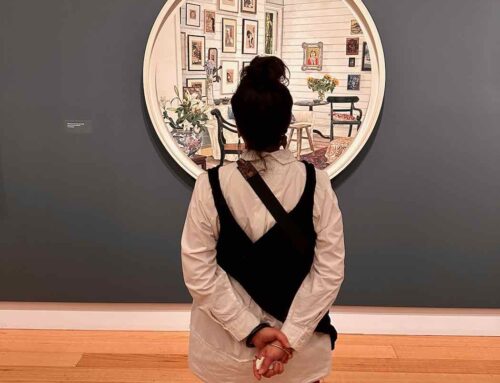
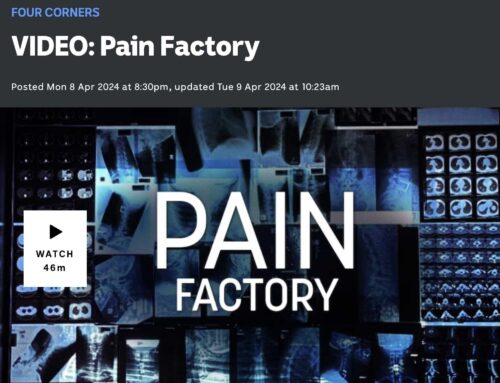
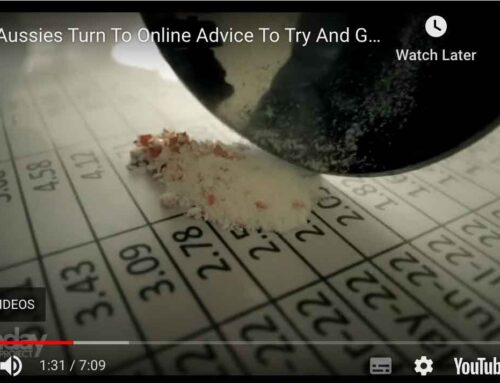
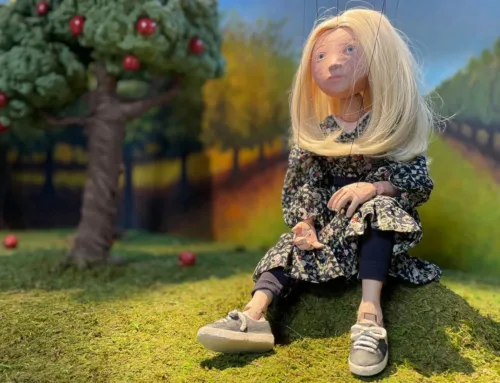
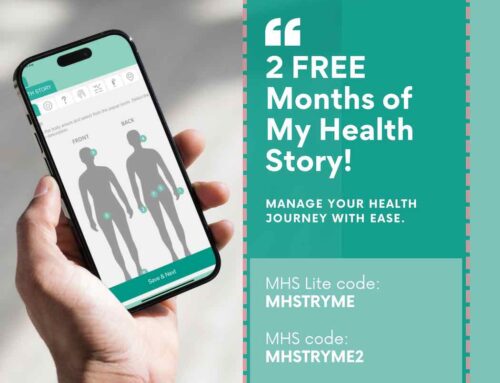
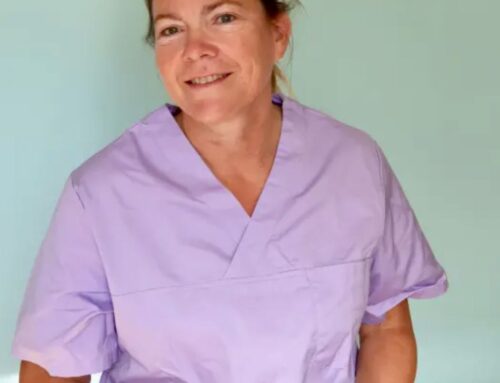
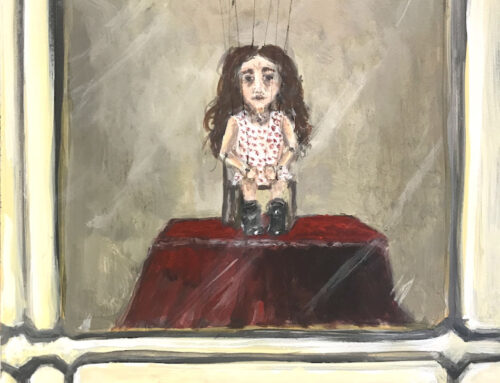
[…] I’ll view this beaming portrait of me in action and recognise the sacrifices I have made and continue to make are helping me move forward and I will enjoy the great moments […]
Precious Soula,
Following your story remains a lifeline. You and Theo’s love story helps me hold on somehow. I am nearing year 8 in September. I had bilateral crush entrapments, on both sides, during a surgery and came out with a broken vertebra as well. 7 years and 2 surgeries later, I’m disabled and working part time from home, because I am single and simply must. The vertebra below my bone fusion has slipped causing a bunch of trouble, and I have severe full body fibromyalgia … or CRPS-2, depending on who you are talking too. Often, I want to wander into Heaven, but I have two grown daughters I still believe have need of me.
I consider the sacral implant but it seems so iffy for the burning pain, at least over here in the US. I try to exercise, but Lord, this body simply isn’t the one I had before all the electrical mayhem went wonky in it! Do you find that you simply are just weak? Worn out from taking a shower or reading the mail, to paying and posting bills. I fatigue so quickly and it takes days to recover, so the job takes all energy. Quite the challenge to be there for loved ones, you know? Or is this not so much for you. Just checking?
I send you enormous encouragement and thank you for always reaching out and sharing. You’ve made a difference for me since day one. I love you forever for sharing your story. You are so brave and kind.
God’s Grace and Blessings cover you, Soula –,
Your friend always, Mickey Nilsen…♡
Hello beautiful Mickey,
It’s incredible how treatment opinions vary in different countries. I can see Australia has really moved away from the nerve decompression and very happy to head into the implants. Could you possibly trial the implant? You’re under so much pressure darling… so much!
Of course I know the fatigue monster but my Chinese Med practitioner solved the roar and now it’s not so bad and I will never forget the moment it all changed. I turned from typing a few lines in an email to head to the couch and realised, I didn’t need to lie down or change task. I kept typing and slowly my blocks of activity built up from there and the fatigue was controllable. Herbs!!!! Not sure if this means anything over there but I’m on ‘ChinaMed vegetable capsules tao hong si wu wan Blood Moving 2 forumla’. I’ve been on them for years!!!! The minute I slip up, back I go – the speech goes, the sleep comes and my heads down in hours!
Blessings to you and much strength lovely. I love you too for following but I wish you never needed to from the bottom of my heart.
xxxxxxxx